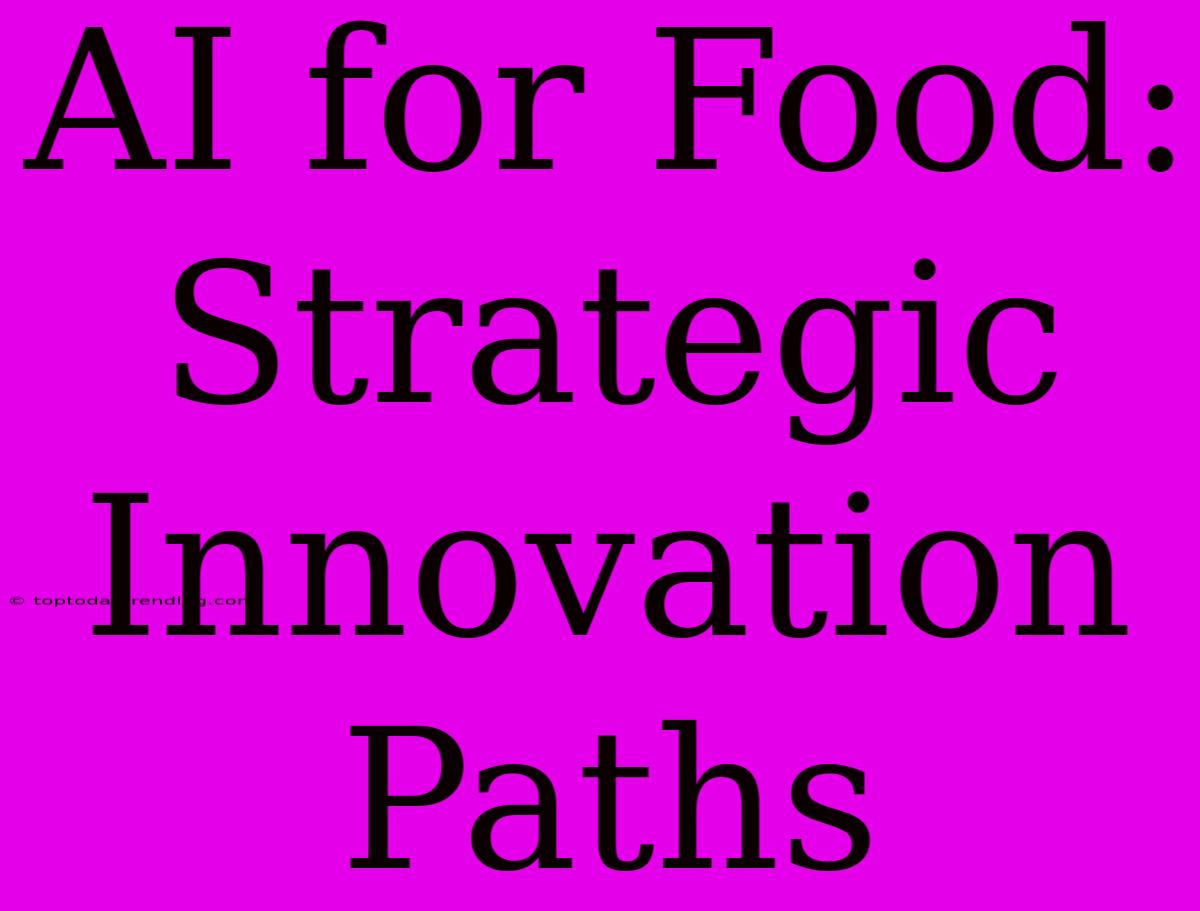AI for Food: Strategic Innovation Paths
The food industry is undergoing a revolutionary transformation, driven by the transformative power of Artificial Intelligence (AI). From optimizing agricultural practices to enhancing food safety and revolutionizing the way we consume, AI is poised to reshape the future of food. This article explores strategic innovation paths that AI can unlock within the food industry, highlighting the potential benefits and challenges of this technological revolution.
1. AI in Agriculture: Revolutionizing Farm Management
1.1 Precision Agriculture: AI empowers farmers to optimize crop yields and resource usage by analyzing data from sensors, drones, and satellites. This data can provide insights into soil health, plant growth, and weather patterns, enabling farmers to make precise decisions regarding irrigation, fertilization, and pest control.
1.2 Crop Disease & Pest Management: AI-powered image recognition systems can identify diseases and pests in crops, enabling timely intervention and preventing widespread damage. This reduces reliance on harmful pesticides and promotes sustainable agricultural practices.
1.3 Livestock Management: AI can monitor livestock health and behavior, optimizing feed management and identifying early signs of illness. This improves animal welfare and increases overall productivity.
1.4 Robotics & Automation: AI-powered robots can assist with tasks like planting, harvesting, and weeding, reducing labor costs and increasing efficiency. This technology is particularly beneficial for large-scale farming operations.
2. AI in Food Processing & Manufacturing: Enhancing Efficiency & Safety
2.1 Production Optimization: AI algorithms can optimize production processes by predicting demand, managing inventory, and identifying bottlenecks. This helps manufacturers reduce waste and improve efficiency.
2.2 Quality Control: AI-powered vision systems can inspect food products for defects and contaminants, ensuring high-quality standards and maintaining consumer safety.
2.3 Food Safety & Traceability: AI can track food products throughout the supply chain, from farm to table, enabling rapid identification of potential food safety issues and facilitating efficient recall processes.
2.4 Personalized Food Development: AI can analyze consumer preferences and dietary needs, enabling the development of personalized food products that cater to specific requirements and tastes.
3. AI in Food Consumption & Retail: Redefining the Consumer Experience
3.1 Smart Kitchens & Appliances: AI-powered appliances can personalize cooking experiences by recommending recipes, adjusting cooking times, and monitoring food quality.
3.2 Personalized Nutrition & Diet Plans: AI algorithms can analyze individual dietary needs and health data to create personalized meal plans and dietary recommendations.
3.3 Food Delivery & Logistics: AI-powered platforms can optimize food delivery routes, reduce delivery times, and minimize waste. This enhances the convenience and efficiency of food delivery services.
3.4 Food Waste Reduction: AI can help identify and track food waste within the supply chain, enabling businesses to implement strategies for minimizing waste and improving sustainability.
Challenges & Opportunities:
While AI presents significant opportunities for the food industry, it also faces challenges:
- Data Privacy & Security: The use of AI in the food industry raises concerns about data privacy and security.
- Ethical Considerations: The use of AI in agriculture and food production raises ethical questions about the impact on human employment and the environment.
- Accessibility & Cost: Access to AI technology and expertise can be a barrier for smaller players in the food industry.
To overcome these challenges, collaboration between industry stakeholders, researchers, and policymakers is essential. Open access to data, ethical guidelines, and support for small and medium-sized enterprises (SMEs) are crucial for maximizing the benefits of AI in the food industry.
Conclusion:
AI is transforming the food industry at an unprecedented pace. By embracing strategic innovation paths, businesses can leverage AI to optimize production, improve efficiency, enhance food safety, and personalize the consumer experience. Addressing the challenges and fostering collaboration will ensure that AI delivers its full potential for a more sustainable, efficient, and accessible food system for all.

